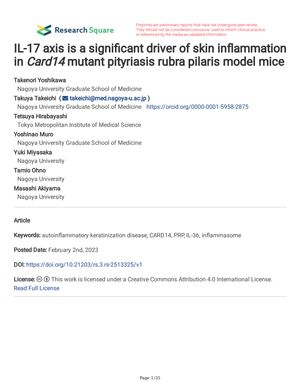IL-17 Axis Is a Significant Driver of Skin Inflammation in CARD14 Mutant Pityriasis Rubra Pilaris Model Mice
February 2023
in “
Research Square (Research Square)
”

TLDR Blocking IL-17 can reduce skin inflammation in a mouse model of pityriasis rubra pilaris.
The study presents the first mouse model of pityriasis rubra pilaris (PRP) with a homozygous knock-in mutation in CARD14, mirroring a human PRP mutation. These Card14C127S/C127S mice exhibit key PRP symptoms such as hair follicle dilatation, follicular plugs, and palmoplantar hyperkeratosis, along with skin barrier dysfunction and hyperactivation of innate immunity pathways, particularly the IL-17 axis. Treatment with an anti-IL-17A neutralizing antibody significantly reduces skin symptoms, highlighting the IL-17 axis as a crucial driver of skin inflammation in PRP and suggesting potential therapeutic strategies.

